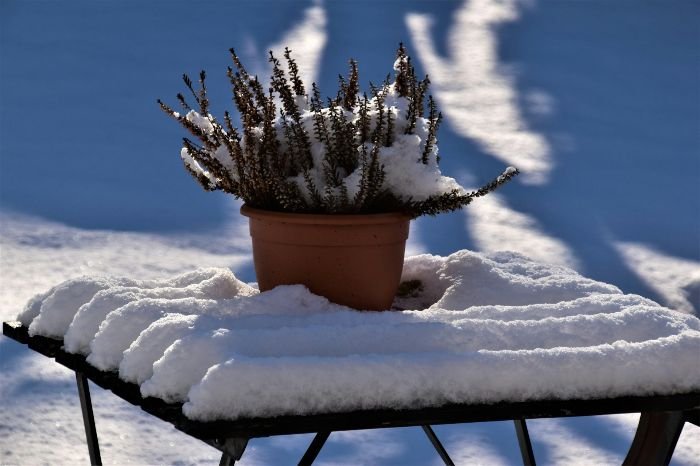Think your winter garden has to be dull and lifeless? Think again. You can find beauty and color in cold-hardy plants. These plants not only survive in the cold but also bring life to your garden.
Instead of a barren garden, you can have a vibrant winter oasis. Why settle for less when you have so much to explore?
Key Takeaways:
- Discover the best cold-hardy plants to beautify your winter garden.
- Find resilient species that thrive in chilly US climates.
- Cold-hardy plants add interest and beauty to your winter garden.
- They withstand freezing temperatures and continue to thrive in harsh winter conditions.
Table of Contents
About Cold-Hardy Plants
When winter comes, your garden may look dull. But, cold-hardy plants change this. They can handle cold and keep your garden interesting in the winter.
The Importance of Winter Interest in Gardens
Winter interest is key to a beautiful garden all year. These tough plants still look good when others sleep. They keep your garden looking great in winter.
Your garden doesn’t have to be boring in winter. Cold-hardy plants bring color and style. They have many colors and textures. This makes your garden a joy to see.
These plants also add strong shapes to your garden. They keep it looking good, even in winter. So, your garden always has a nice framework.
Benefits of Growing Cold-Hardy Plants
Using cold-hardy plants in your garden has many pluses. They are tough, handling cold climates well. So, they are perfect for winter gardens in chilly places.
These plants need little care, which is great for gardeners. They save you time. Plus, they get sick less, needing less pest control.
Cold-hardy plants can bring life to your garden even in winter. Birds and bugs find food and shelter in them. They serve as a place for wildlife when it’s cold.
Having cold-hardy plants is a win-win. They make your garden pretty and support wildlife. Plus, they are easy to take care of. What’s not to love?
Understanding Cold-Hardy Plants
Cold-hardy plants can live through cold weather because of special features. They have learned to deal with freezing temperatures and tough conditions. This makes them great for gardens in the winter.
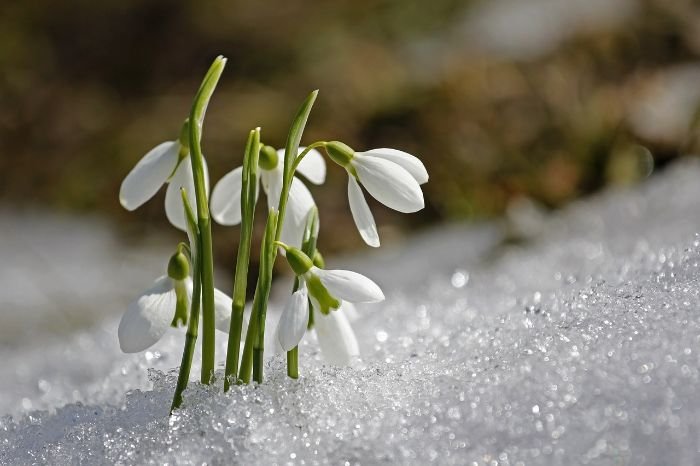
Characteristics of Cold-Hardy Plants
These plants have thick leaves that keep them warm. This helps them handle the cold. They also grow roots deep down to find water and nutrients, even in icy soil.
They can handle the cold well without getting hurt. Their cells are protected, so they stay healthy. This is a big reason they do well in winter.
How Plants Survive and Thrive in Cold Weather
Plants that are cold-hardy use smart ways to stay healthy in the cold. They go dormant, which means they rest. This helps them save energy and stay safe until it’s warmer.
These plants also make substances like antifreeze. It stops ice from hurting their cells. That way, they can keep working and stay alive even when it’s freezing outside.
Knowing about cold-hardy plants helps you pick the right ones for winter. By selecting plants with these features, your garden can do well, even in very cold weather.
Top Cold-Hardy Plants for Winter Gardens
When making a winter garden, pick hardy plants. They should handle cold and still look good. Some top picks for winter gardens are:
Evergreen Trees and Shrubs
Evergreen trees and shrubs give your garden structure and color. They keep their leaves in winter, adding green to snowy scenes. Choose from pine trees, holly bushes, or boxwoods for beauty and strength.
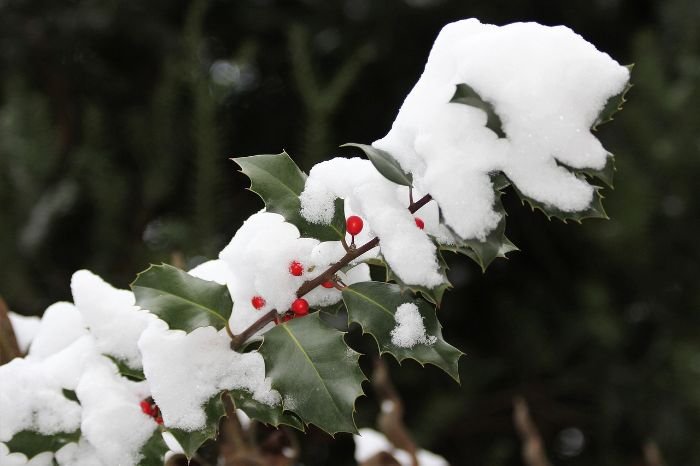
Winter-Blooming Perennials
Winter-blooming perennials add color to cold days. They bloom when it’s freezing, making winter less dull. Plant hellebores, witch hazel, or cyclamen for bright flowers in winter.
Deciduous Plants with Winter Interest
Deciduous plants don’t have leaves in winter, but they’re still interesting. Some have cool bark or pretty seed heads. Grow dogwood, contorted willows, or feather reed grass for garden texture.
Cold-Hardy Flowers
Cold-hardy flowers really brighten up a winter garden. They withstand the cold, blooming with color and beauty. Let’s talk about hellebores, snowdrops, and winter pansies, three favorites for cold weather.
Hellebores – The Winter Rose
Hellebores, the winter rose, flourish in the cold. They blossom in whites, pinks, purples, and greens. These flowers can last for months, making your garden lovely. With their elegant look, hellebores bring joy to winter.
Snowdrops – Early Winter Beauties
Snowdrops bloom first in the winter, showing life. These petite, white flowers are a beautiful sight. Hanging from thin stems, they light up the garden. Snowdrops hint at the spring to come, bringing hope.
Winter Pansies – Color in the Cold
Winter pansies defy the cold, blooming brightly. They come in purples, yellows, oranges, and whites. Despite winter’s chill, they bring color and cheer. Winter pansies make the garden a joyful place.
Shrubs and Trees for Winter Gardens
Shrubs and trees make a garden lively, even in winter. They bring structure, texture, and color. This mix turns your yard into a bright place during the coldest days.
Holly and Its Vibrant Berries
Holly brings cheer to winter. Its glossy green and vibrant red berries are iconic symbols of the holidays. These berries also attract birds, making your garden full of life. Choose hardy holly species for year-round beauty.
Winterberry for Seasonal Color
Winterberry, is known for vibrant red berries. These berries make a great show in the snow. Growing well in wet spots, it’s perfect for areas with bad drainage. Make sure to plant both male and female plants for berries.
Ornamental Grasses for Texture and Movement
Ornamental grasses bring texture and motion. Their plumes and seed heads move gracefully in the wind. Grasses like miscanthus and pampas offer different heights and textures. They help create a fascinating winter scene.
Adding holly, winterberry, and ornamental grasses to your garden improves its look. They bring color, texture, and attract wildlife. This makes your garden a lively place all winter long.
Designing a Winter Garden
Designing a winter garden involves several key factors that make it visually stunning. The garden’s structure and form are crucial for a strong design. Cold-hardy plants are a must for creating structure and form.
Different plants in the garden add depth and dimension. Evergreen trees and shrubs keep the garden looking full all year. Ornamental grasses add a gentle movement and texture to the scene.
Mixing plants with different bloom times and colors keeps the garden interesting in winter. This diversity brings life and color during the coldest months. It creates a beautiful display of nature’s wonders.
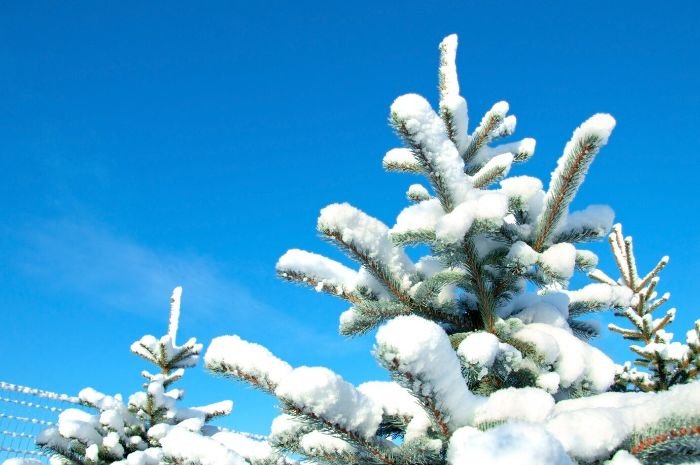
Adding hardscaping like stone pathways or gravel can make your garden more appealing. They guide visitors and add an element of discovery. Sculptures or art pieces become eye-catching focal points.
Use winter containers for extra grace. Plant them with hardy plants, or add seasonal touches like pine cones. Placing them strategically adds beauty to your space. This mix of plants and structures creates a balanced design.
By following design principles and carefully choosing elements, your winter garden can be amazing. A well-designed garden will remain beautiful and welcoming even in winter. This approach ensures your garden is enjoyed throughout the cold months. It brings cheer and delight to everyone who sees it.
Planting and Caring for Cold-Hardy Plants
Soil Preparation for Winter Gardens
It’s key to create a fertile area for cold-hardy plants to grow strong in your winter garden. First, make sure the soil is good by removing weeds and adding organic stuff. You can use compost or well-rotted manure. It’s also important that the soil drains well for these plants. This will stop the roots from getting too much water and rotting.
Proper Planting Techniques for Cold Conditions
For cold-hardy plants, the way you plant them is very important for them to do well. When you’re ready to plant, dig a hole that’s big enough for the plant’s roots. Remember, the top of the plant should be a bit above the soil. This stops the plant from getting sick. Make sure there’s enough space between plants for them to grow and get air. After planting, press the soil lightly so there are no air spaces under the plant.
Mulching and Watering Practices for Winter
During the winter, mulch and water are very important for these plants. Put wood chips or straw around the plants to keep the soil warm and damp. This helps them fight the cold and keeps water from escaping too fast. But, don’t use too much mulch. This can make the soil too wet and hurt the plants. Water the plants a lot, but not too often. Let the soil become a bit dry between waterings.
Protecting Plants in Extreme Cold
Extreme cold can be bad for plants that usually handle the cold. But, there are ways to keep them safe, even in the harshest winters. By using these methods, your cold-loving plants can stay healthy and alive.
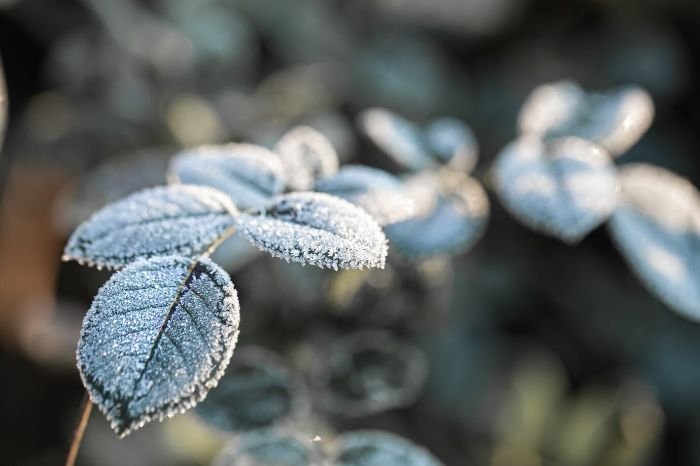
Using Mulch and Covers to Shield Plants
To help plants stay warm, mulch and covers are key. Mulch keeps the ground under it more even in temperature. This stops root damage caused by the ground freezing and thawing. Spread a thick layer of mulch around each plant’s base and out to its edges. This keeps the ground moist and the right temperature for plant health.
For extra cold protection, use covers like burlap or frost blankets. These items make a small area that keeps the plants from the worst of the cold winds and snow. They create a special zone that lowers the risk of winter harm.
Windbreaks and Other Protective Structures
Dark cold. Wind can hurt plants by making them lose moisture too fast. Windbreaks, like fences or big bushes, stop or slow wind. This reduces its effect on your plants. It makes a kinder spot for them, protecting them from drying out because of the wind.
Other protections, such as cold frames or cloches, also help. They act like little greenhouses. These tools keep the heat in, which is great for sensitive plants.
Monitoring for Winter Damage and Recovery
Watch your plants in the winter for signs of trouble. Frost, dryness, and icy roots are dangers. Look for leaves turning brown or black, stems getting weak, or plants wilting. If you see damage, act fast. Trim off the bad parts and try to protect the plants more.
As winter ends, keep an eye out for new growth. This shows your plants are healing. Water and feed them well to help them bounce back. This care will keep them strong and healthy.
Conclusion – Embracing Winter Beauty
Winter may bring colder temperatures and a barren landscape. But, you can still find beauty and joy in this season. By adding cold-hardy plants to your garden, you make an outdoor space that shines, even in winter.
The secret to winter beauty is choosing the right plants for your garden. It’s important to pick plants that can endure the cold and still look beautiful. Evergreen trees, shrubs, and winter-blooming flowers all help your garden stay lively. They bring life when everything else seems to have stopped growing.
Creating an appealing design is also key to a beautiful winter garden. Think about how your plants look and put them together in a way that keeps your interest. Adding paths and sculptures can make your garden even more special.
Taking care of your plants in winter is very important. Make sure the soil is ready and plant properly. Cover your plants and protect them from severe cold. Doing these things helps your plants stay healthy and live through winter.
Despite winter’s hardships, cold-hardy plants make your garden beautiful. Enjoy this season’s unique features and make a space that brings happiness all winter long. With the right plants and care, your winter garden will be a tribute to nature’s strength and beauty.
FAQ
Why are cold-hardy plants important for winter gardens?
Cold-hardy plants keep gardens pretty in winter. They withstand freezing temps. They add beauty even in harsh conditions.
What benefits do cold-hardy plants provide?
These plants bring color, texture, and form to dull winter landscapes. They’re easy to care for and tough, ideal for winter gardens.
What characteristics do cold-hardy plants possess?
They have thick leaves and deep roots. They can handle the cold well. These features help them grow and look great in winter.
What types of plants are recommended for winter gardens?
Go for evergreens, plants that bloom in winter, and those with unique winter features. They include trees, shrubs, and flowers.
What are some examples of cold-hardy flowers?
Look for hellebores, snowdrops, and winter pansies. They’re tough but beautiful, great for winter gardens.
What are some shrubs and trees that are suitable for winter gardens?
Holly, winterberry, and ornamental grasses make good shrubs and trees. They add structure, color, and texture to winter gardens.
How can I design a beautiful winter garden?
Use cold-hardy plants for structure. Mix plants with different colors and bloom times. Add paths and sculptures for more interest.
How can I protect my cold-hardy plants from extreme cold?
Use mulch and covers for warmth. Build windbreaks and shelters. Watch for damage and care for your plants as needed.






